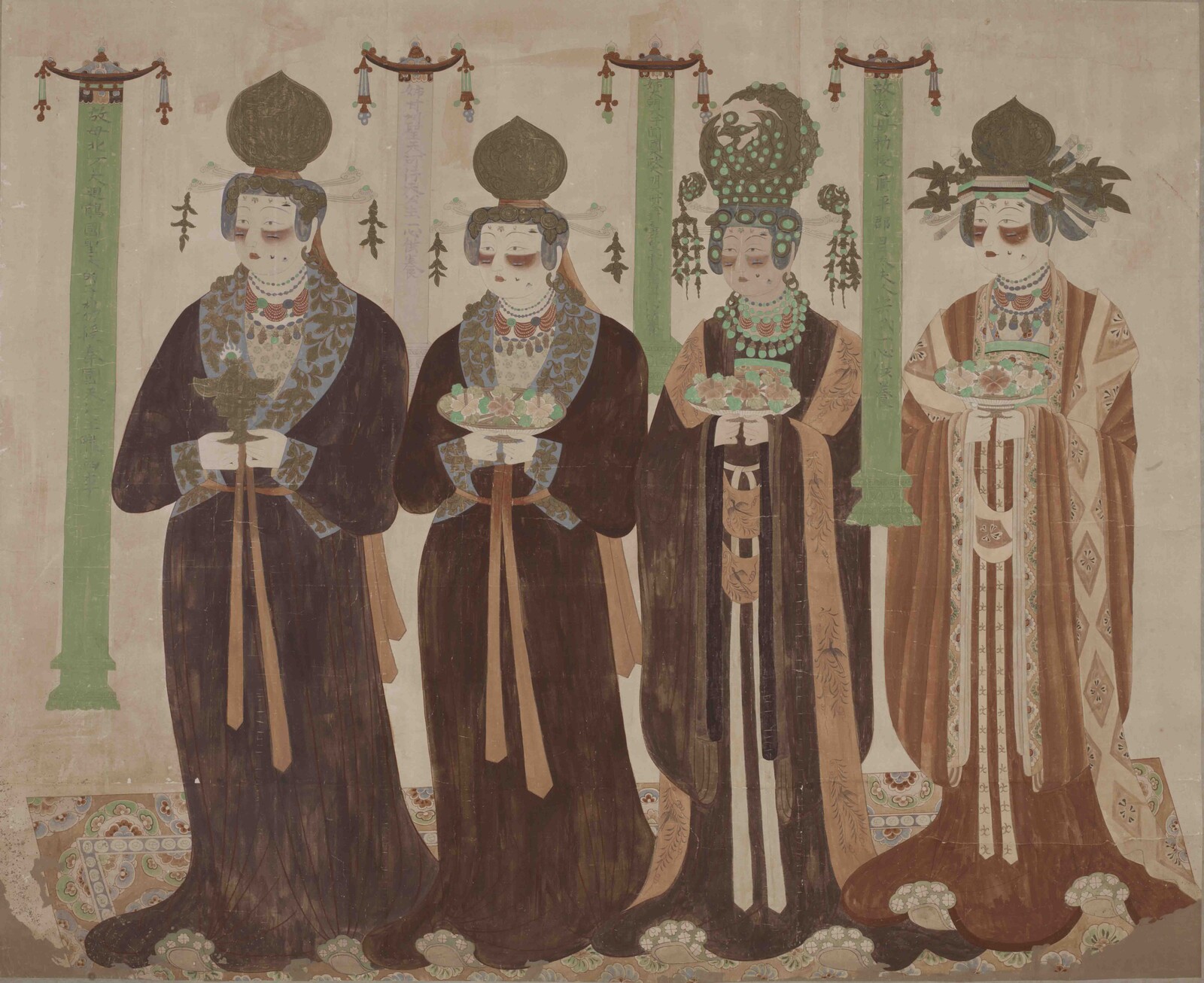December 1, 2015–March 20, 2016
Please take A1/A2 Elevator of Himalayas Center to the 3rd Floor
No. 869, Yinghua Rd., Pudong District
201204 Shanghai
China
Hours: Tuesday–Sunday 10am–6pm
T +86 21 5033 9801
information@himalayasmuseum.org
The Dunhuang grottoes, spanning over 1,680 meters, were carved over a thousand-year period, from the 4th to the 14th century AD. During the past seven decades, generations of “Dunhuangers,” from the National Dunhuang Art Institute (founded in 1944) to today’s Dunhuang Research Academy, have tirelessly endeavored to bring back to life the nearly extinct beauty and vitality of this medieval culture and art. For the last two years, the Shanghai Himalayas Museum and the Dunhuang Research Academy, have striven to present the beauty and vitality of Dunhuang to Shanghai and audiences worldwide.
In the past few years, the art of Dunhuang has travelled to the National Art Museum of China (Beijing), Guan Shanyue Art Museum (Shenzhen), Zhejiang Art Museum (Hangzhou) and the Hong Kong Heritage Museum, each iteration garnering popular acclaim from local audiences. For this unprecedented exhibition of Dunhuang in Shanghai, in addition to historical relics and expert replicas of grottoes and cave paintings, the Shanghai Himalayas Museum will feature a probing dialogue between the treasures of Dunhuang and contemporary art. A selection of contemporary artworks, including works by Li Lei, Ding Yi, Qiu Zhijie, Li Yongzheng, and Nam June Paik will be placed in conversation with the art of Dunhuang to reflect on the multiple relationships—inspirational, conflicting, and transformative—that occur between historical and contemporary art and culture as well as in the mode of approaching and representing religion and spirituality.
Dunhuang—Song of Living Beings, the first major exhibition of Dunhuang in Shanghai, showcases 165 sets of original works and artifacts representing all the core aspects of Dunhuang art and culture. Highlights include eight replica caves that embody the highest artistic value of the Dunhuang grottoes; 11 copies of painted stucco sculptures; 60 copies of cave murals produced by the founding pioneers of the National Dunhuang Art Institute (precursor to the Dunhuang Research Academy which included Mr. Chang Shuhong, Mr. Duan Wenjie and Ms. Chang Shana); 25 copies of silk paintings, ten carved brick replicas from the Dunhuang tombs of the Han Dynasty, and 51 cultural relics from Dunhuang.
The eight replica caves featured in this exhibition present a rare opportunity for audiences in Shanghai to view the interior of these grottoes. Aside from the Mogao Cave 17 (Dunhuang Library Cave), all of the caves on which the replicas are based are not open to the public for preservation purposes. On view will be one of the oldest caves at Dunhuang, Mogao Cave 275 of the Northern Liang period (397–439 AD). The cave is home to Maitreya, the future Buddha, whose unique adornment and cross-ankled posture as well as triangular brocade-patterned backrest, demonstrates the integration of traditional Chinese sculptural arts and the influence of Buddhist art from Central Asia.
16 out of the 51 cultural relics on display are designated “First-Class National Cultural Relics,” including the “Nature of the Tathagata in Nirvana Sutra (Northern Wei period),” which attests to the evolution of the Chinese script. Due to their protected status, these relics are rarely put on display to the public in the galleries at Dunhuang. Also on display will be Buddhist sutras written in Chinese, Tibetan, Khotan, Turkic, Uighur, Sanskrit, Sogdian and Hebrew scripts. Through the presentation and interpretation of these relics and historical documents, the exhibition aims to make the art and history of Dunhuang more accessible to the general public. In this vein, the Shanghai Himalayas Museum has invited a professional docent team from the Dunhuang Research Academy to provide audiences with insight into exhibited works as well as the myriad stories behind Dunhuang.
A major stop on the ancient Silk Road, Dunhuang was of strategic importance in terms of connecting China and the West. The history of Dunhuang as an official county dates back to the ruling period of Emperor Wu of the Western Han Dynasty (156–87 BCE). As an extension of the exhibition space, iconic landmarks such as the Yumen Pass, the Great Wall of the Han Dynasty and the Beacon Tower at Yangguan will be re-created at the Himalayas Center plaza to give visitors a vivid sense of the scenery of ancient Dunhuang. In addition, a series of lectures by masters of Dunhuang art including Fan Jinshi and Wang Xudong will be presented throughout the exhibition period.
Dunhuang—Song of Living Beings will be unveiled at the Shanghai Himalayas Museum on November 29, 2015. The exhibition is co-curated by Mr. Wang Xudong, Director of Dunhuang Research Academy, and Mr. Wong Shun-kit, Advisor to Shanghai Himalayas Museum. Dr. Yongwoo Lee, Director of Shanghai Himalayas Museum, is the Artistic Director, and Ms. Fan Jinshi, Honorary Director of the Dunhuang Research Academy and popularly known as the “Daughter of Dunhuang,” the exhibition’s chief Academic Advisor. This exhibition is made possible through the generous support of Mr. Dai Zhikang, Chairman of the Board of Trustees of the Shanghai Himalayas Museum and Chairman of Zendai Group.
Participating contemporary artists (in alphabetical order):
Ding Yi, Guo Gong, He Chengyao, He Wenque, Huang Yong, Jiang Zhenggen, Kong Baiji, Li Hongbo, Li Lei, Li Yongzheng, Nam June Paik, Ni Youyu, Qiu Zhijie, Shao Yinong & Mu Chen, Shi Zhiying, Wen Hao, Xu Jing, Xie Shenghao, Zhang Kechun, Zhu Legeng
For further information and press inquiries, please contact
Xian Chen: xian.chen [at] himalayasmuseum.org
Penny Liu: penny.liu [at] himalayasmuseum.org
For tickets, please contact
Ice Wang: wangyi [at] zendai.com
Ge Liu: ge.liu [at] himalayasmuseum.org



